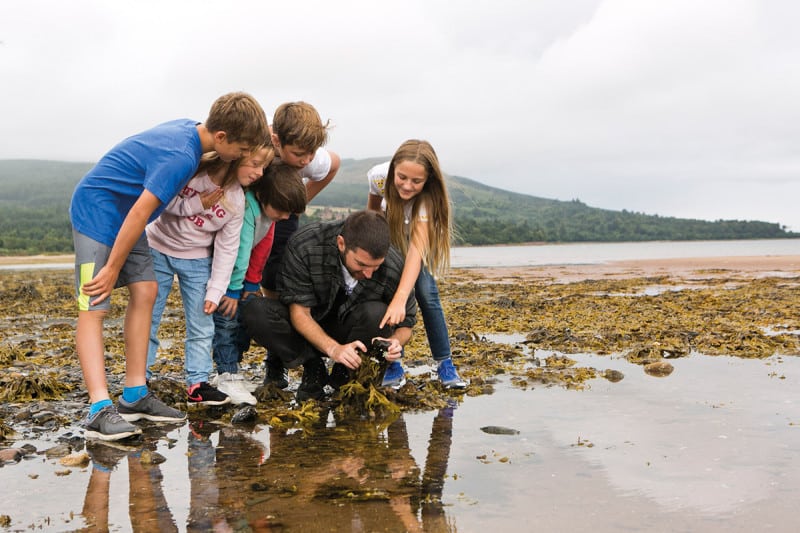
Attending the launch of Shore: How we see the sea for New Scientist, 18 August 2018
NOBODY catches much fish around the island of Arran now: overfishing and pollution have hit wild populations hard. There are still plenty of fish, mind: not free-swimming, but cooped up in huge salmon farms that leach detritus, pesticides, antibiotics and plastic waste into the Firth of Clyde.
And yet it is to Arran that Scotland’s coastal communities have turned to see a working vision of a cleaner, healthier, more productive ocean.
Arran’s Lamlash Bay became a Community Marine Reserve in January 2008. Its No Take Zone is helping local maerl, a fragile pink coral-like algae, which provides a habitat for sponges, sea squirts, crabs, squat lobsters and scallops. The hope is that commercial species such as cod will use this area to recover their numbers, and then spill out into the surrounding sea.
Meanwhile, the 280 square kilometres of the South Arran Marine Protected Area restricts trawling and dredging. A community development, it is the first of its kind, and has been taken up by the Scottish government with the creation of 30 more MPAs, covering some 20 per cent of the country’s seas.
Restoring Scottish sea life after decades of pollution, dredging and overfishing is not going to be easy. “We’ve got a long way to go, just to get the environment back to the condition it was 50 years ago,” says Howard Wood, founder of local advocacy organisation COAST, the Community of Arran Seabed Trust. Most ministers, he adds, are only interested in what the environment provides or used to provide – and how much can be wrung from it in five years.
The exciting thing about COAST is the armoury it brings to the battle against the myopia of politicians. Glasgow and York universities are monitoring Arran’s coastal waters, while COAST is working with local tourist organisations to develop dive sites. Even more impressively, it has won over the local fishing community.
Multimedia festival Shore: How we see the sea is the latest addition to COAST’s arsenal. This festival of coastal life was created in Arran and is now circling the Scottish coast, before it ends up in Edinburgh’s Dynamic Earth science theme park in April 2019. It is curated by Invisible Dust, a UK-wide organisation that pairs scientists and artists to explore key environmental issues.
Its founder, Alice Sharp, has commissioned two film-makers, despite the lack of cinemas in the north of Scotland. But the Shore festival does not lack technical backup: it has Screenmachine, a large blue lorry that unpacks Transformer-like into a comfortable 80-seater surround-sound cinema.
Margaret Salmon’s Cladach explores the shoreline of the Wester Ross Marine Protected Area and the community bordering it in Ullapool. “Imagine somebody spending time in a town, then drifting down a beach and into the sea. Margaret’s film is like a journey from one medium to another,” says Sharp.
The second film, I Walk There Every Day But Never Saw It That Way by Ed Webb-Ingall, is a very different proposition as the first instalment in a community video project that aims to get Scotland’s disparate coastal communities talking to each other.
It is an old idea, Webb-Ingall says. In the 1970s, the National Film Board of Canada invited film-maker Colin Low to visit Fogo Island, off Newfoundland, whose fishing community was collapsing. “Low made short films of a group on one part of the island, then showed it to another group.” Soon the different communities and interests had a conversation going, and a more sustainable fishing industry began to emerge.
“The myth among film-makers is the ‘Fogo Process’ rejuvenated the island,” says Webb-Ingall. “Others reckon they were doing the work already!” Salmon is inclined to agree: “These precarious communities have experienced centuries of ebbs and flows. They’re a strong people.”
